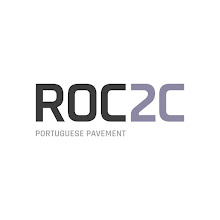It’s inspired by Roman mosaics, but the traditional Portuguese cobblestone pavement developed in Lisbon during the city’s
post-1755-earthquake reconstruction. It all started with Rossio Square’s
wave-like patterns and soon spread all over the capital, to other cities in
Portugal, to Brazil, Macau and other colonies. Here are ten of the most
outstanding examples in Lisbon today.
1| RUA DA VITÓRIA
In 2006 Lisbon decided to honor the dedicated craftsmen who’ve paved the
city by hand throughout time. A bronze monument with two life-size figures was
placed downtown on Rua da Vitória, showing the men at work on a pavement of the
ship of St. Vincent accompanied by ravens which are the emblems of the city of
Lisbon.
2| ROSSIO
This is where it all started, Rossio Square, given the wave patterns
in 1849.
3| AVENIDA DA LIBERDADE
It’s on Avenida da Liberdade that we now find the most beautiful
examples of this art form, fromRestauradores
Square to Marquês de Pombal. Down the avenue are floral motifs and abstract
patterns, while by the monument of Marquês de Pombal is an image of a
Portuguese caravel.
4| PRAÇA DO IMPÉRIO
By the gardens in front of Jerónimos Monastery (“Praça do Império”) are other notable
examples, but it’s the famous mosaic across the street by the Discoveries Monument that
draws the most attention. Surrounded by a wave pattern similar to that of
Rossio Square is a map of the world showing the routes of the Portuguese
explorers.
5|
PARQUE DAS NAÇÕES
Although the eastern district of the city is all about the contemporary,
it still follows the use of the traditional cobblestone pavements. It has some
of the most extraordinary designs, with images of sea monsters by the Oceanarium and several maritime motifs down
Alameda dos Oceanos.
6| LARGO DE CAMÕES
Lisbon’s role in the Age of Discovery is recalled all over the city, and
by the statue of the leading literary figure of the time (poet Luis de Camões)
are images related to the sea.
7| AVENIDA PEDRO ALVARES CABRAL
The same is seen around the monument to Pedro Alvares Cabral, the discoverer
of Brazil, found by the garden of Estrela.
8| CAIS DO SODRÉ
Usually it’s the images that stand out on the pavements, but most of the
city squares present pattern designs. Cais
do Sodré (Praça Duque de
Terceira) is an exceptional example for the dominant use of dark stone,
contrary to what is found throughout much of the city, such as in Largo do
Chiado and Municipal Square.
9| LARGO DO CHIADO
10| PRAÇA DO MUNICÍPIO
Texts: http://www.lisbonlux.com
Photos: Celso Gonçalves Roc2c and http://www.lisbonlux.com


















Comentários
Enviar um comentário